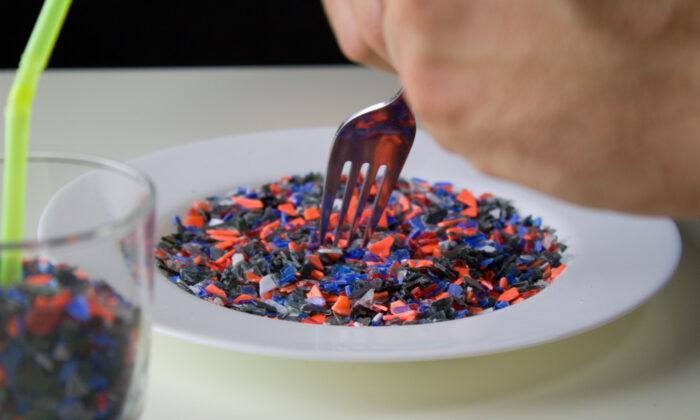Phthalates are a group of chemicals used to make plastics more durable. They are often called plasticizers. Some phthalates are used to help dissolve other materials. Phthalates are in hundreds of products, such as vinyl flooring, lubricating oils, and personal-care products (soaps, shampoos, hair sprays).
Some phthalates are in polyvinyl chloride plastics, which are used to make products such as plastic packaging, garden hoses, and medical tubing.
How People Are Exposed to Phthalates
People are exposed to phthalates by eating and drinking foods that have contacted products containing phthalates. Some exposure can occur from breathing phthalate particles in the air. Children crawl around and touch many things, then put their hands in their mouths. Because of that hand-to-mouth behavior, phthalate particles in dust might be a greater risk for children than for adults. Inside a person’s body, phthalates are converted into breakdown products (metabolites) that quickly leave the body in urine.How Phthalates Affect People’s Health
Some types of phthalates have affected the reproductive system in animals. Human health effects from exposure to low levels of phthalates are not as clear. More research is needed to assess the human health effects of exposure to phthalates.Levels of Phthalate Metabolites in the U.S. Population
By measuring phthalate metabolites in urine, scientists can estimate the amount of phthalates that have entered people’s bodies. CDC scientists measured 13 phthalate metabolites in the urine of 2,636 or more people aged 6 years and older who took part in the National Health and Nutrition Examination Survey (NHANES) during 2003–2004. CDC published these findings in the Fourth National Report on Human Exposure to Environmental Chemicals.- CDC researchers found measurable levels of many phthalate metabolites in the general population. This finding indicates that phthalate exposure is widespread in the U.S. population.
- Adult women have higher levels of metabolites measured in urine than do men for those phthalates that are used in soaps, body washes, shampoos, cosmetics, and similar personal care products.
- Non-Hispanic Blacks have higher levels of exposure for several phthalates and phthalate alternative metabolites than do Non-Hispanic Whites.
This story was originally published on the Centers for Disease Controls (CDC) site.



